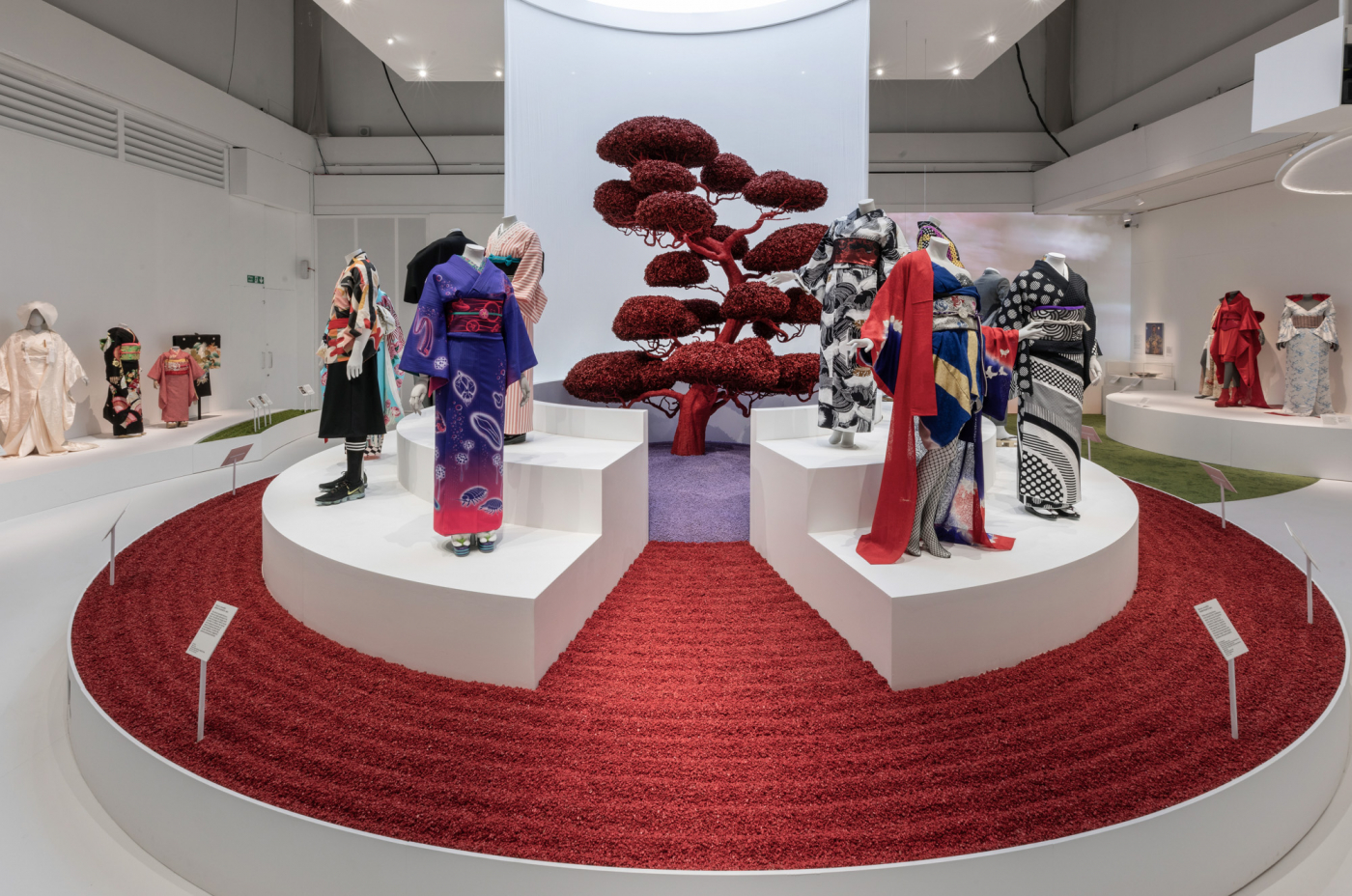
Kimono my house
Karen Krizanovich on the Edo glam of the kimono, from the 17th century to Madonna and beyond

Karen Krizanovich on the Edo glam of the kimono, from the 17th century to Madonna and beyond

Don’t wear a kimono in a house with knobs. Doorknobs, that is. Kimono sleeves, fashioned long to be pockets, love anything that’s sticking out. They will catch, and jerk you off your feet. They’re meant for tatami mats, sliding doors and smooth walls. Ever elegant, kimonos are wiser than you are. They fend off judgements that you lack sophistication. Even when worn by bandits and fools in old Japanese movies, they suggest ease and style.
The Victoria & Albert museum in London has conjured these thoughts – and more – in the first major kimono exhibition held in Europe. Curated for the V&A by Anna Jackson and Josephine Rout, the exhibition heads to Gothenburg in 2020, Montreal in 2021 and Amsterdam by 2022. Proving the kimono as an iconic staple across centuries and continents, Kimono: Kyoto to Catwalk winds through Gallery 34 like a calming, pleasant landscape, rising and arcing with kimono after kimono – shapes, colours, sizes, countries, fashions and eras – from 1660s Japan to the west and beyond. If you’ve ever wondered what the V&A has had in its kimono locker, now’s your chance to see what they’ve been collecting since 1852.

Kimono: Kyoto to Catwalk
Items on display include kimonos designed by Living National Treasure of Japan Kunihiko Moriguchi, a textile artist and master of the yuzen dying technique. Alexander McQueen’s dress from the cover of Björk’s Homogenic, as well as pieces by Yves Saint Laurent, Rei Kawakubo and John Galliano, demonstrate how the kimono’s form morphs into other ideas. With almost 300 works exhibited, these are the plums from the museum’s superb collection, with the rest lent by other museums and private collectors across the UK, Europe, America and Japan.

Kimono: Kyoto to Catwalk
The samisen and flute music played throughout the exhibit is soothing, and works well to offset the inevitable V&A throng, helping you to appreciate the artistry of textiles and tailoring. Two of my own favourite kimonos – purchased as an undergraduate from a second-hand shop in Wisconsin and now valued each for tidy sums – echo the V&A’s own red-patterned furisode kimono of 1800-1850, made in the style of the pleasure district. A standout piece on show, on loan from Japan: A startling stencil-dyed furisode kimono of the 1920s, its fabric adorned with a graphic pattern that is both sleek and modern.
If you own, wear and love any kimono, you’ll see its siblings here, stretched out behind glass, up on a wall of mirrors or showing its graceful proportions on a mannequin, standing in a semicircle topped with burgundy topiary.

Kimono: Kyoto to Catwalk
A short history of kimono: First brought to Europe in the mid 17th century, they were so popular that non-Japanese fabrics were exported to Japan to be made into kimonos. These rare, startling garments morph European style of the time into what was then Eastern exotic feature kimonos made for the Dutch market, others made with French brocade and chintz from India. By the 19th century, Japan was making kimono to export, using European methods and dyes. It was only a matter of time when in 20th century designers like Paul Poiret, Mariano Fortuny and Madeleine Vionnet snaffled the kimono’s free-flowing grace for their own works. There are also several windows of accessories on display at the V&A with a Japanese influence, including luminously chic things by Cartier. Modern garments by Thom Browne, Duro Olowu and Yohji Yamamoto join cinematic kimono. You’ll see Toshirō Mifune’s from Sanjūrō, Oscar-winners from Memoirs of a Geisha, and, natch, Jean Paul Gaultier’s kimono thing Madonna wore in the video for Nothing Really Matters.
The beat goes on with contemporary designs by Jōtarō Saitō, Hiroko Takahash, Rumi Rock and Modern Antenna, and the kimono-influenced costumes for the original Star Wars, as designed by John Mollo and Trisha Biggar. The pièce de résistance: Freddie Mercury’s personal home kimono.
Some visitors to the exhibition were wearing their own kimono when I went. While I wouldn’t do that, I could hear mine pining from the closet to be taken out and shown off. But not around knobs. C
Kimono: Kyoto to Catwalk is on show until 21 June, 2020 at the V&A, London